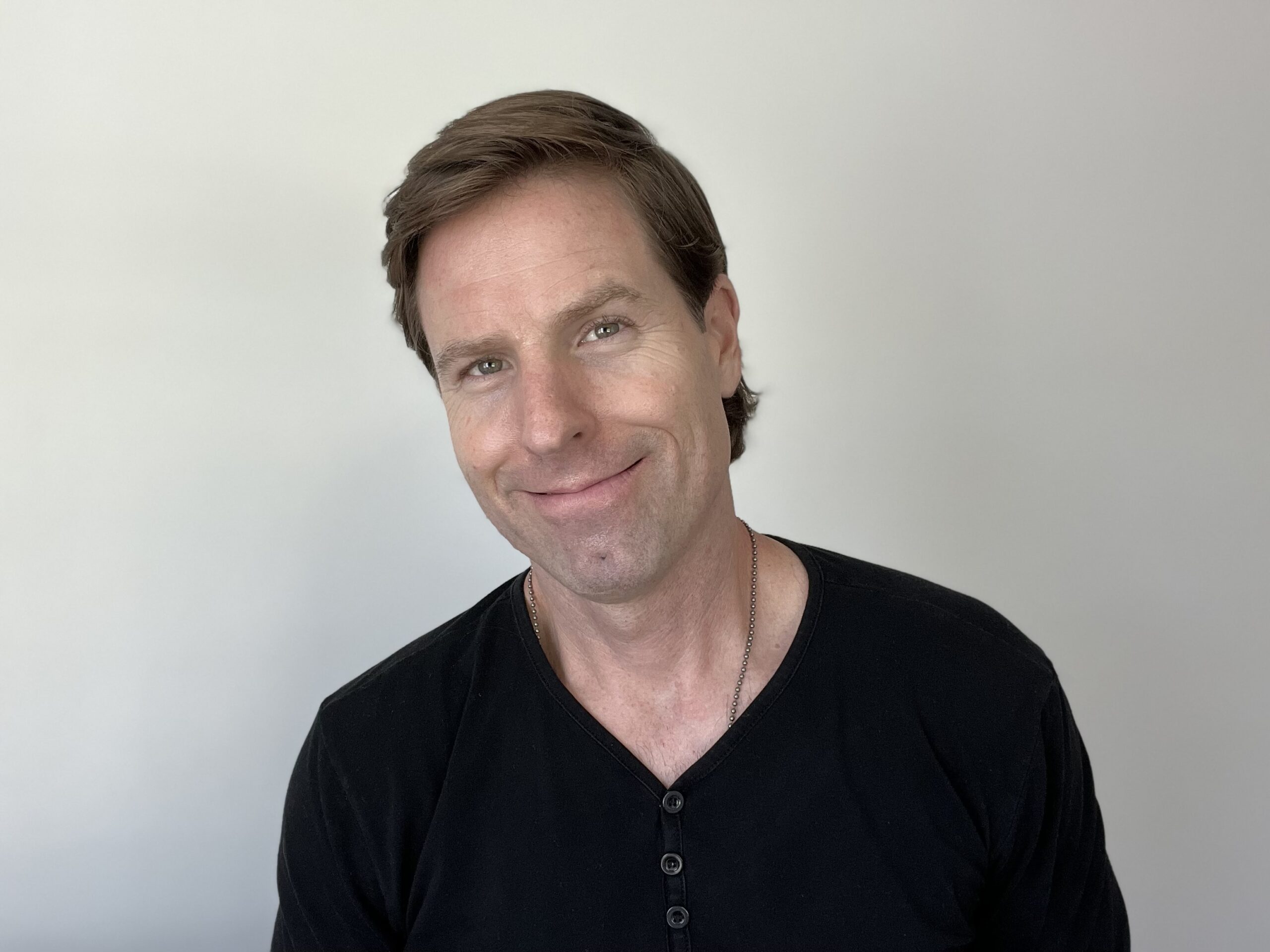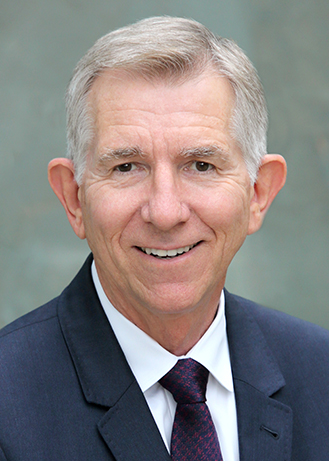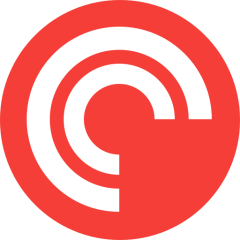Efficient and Optimal Investing with Mark Hebner
Listen to us On
About the Episode
We focused on efficient and optimal investing, the history of passive investing through indexing, why so many people are still focused on active investing, how to properly diversify, and how to get started, with Mark Hebner, CEO of Index Fund Advisors, and author of Index Funds.
Listen to hear a difference-making tip on how much to be saving today to position yourself for long-term financial success!
You can learn more about Mark at IFA.com, Facebook, Instagram, X, YouTube, and LinkedIn.
Did you get anything out of this episode? Do us a solid and leave a review:
https://ratethispodcast.com/alignedmoneyshow
Learn more and engage at MoneyAlignmentAcademy.com, Twitter, LinkedIn, Instagram, YouTube and Facebook.
Buy George G a coffee (he loves coffee)
https://www.buymeacoffee.com/lifeblood
Have George G speak
https://moneyalignmentacademy.com/speaking/
Financial literacy and wellness for individuals, families, and companies
https://moneyalignmentacademy.com/
Find George G’s books here
The Aligned Money Show is the podcast for Money Alignment Academy, copyright 2024.

George Grombacher
Host

Mark Hebner
Guest
Episode Transcript
george grombacher 0:02
Mark to get us started. Give me two truths and a lie, please.
Mark Hebner 0:08
Well, George, I’ve been thinking about my two truths and a lie. And I hopefully came up with some good ones for you. The first one is, I think the prices of all stocks are fairly, fairly priced all the time. So basically, all stocks are fairly priced all the time. I also believe that if I worked really hard, and studied for hours about each individual stock that I bought or sold, that I could do better, or beat the market. And lastly, I assume that the returns that I earn from stocks are explained by the risk of the stock rather than my speculating on them.
george grombacher 0:57
Those are excellent, solid and certainly germane to your work, I believe, sir, I’m going to say the lie is the second one, that you thought that you could beat the market or get a better return based on your studies.
Mark Hebner 1:12
Ding, ding, ding, ding. Sure. You won. Fan?
george grombacher 1:16
tastic. Well, I appreciate it, sir. Okay. Yeah,
Mark Hebner 1:21
I love it. Bravo. So all really important points for investors. And I hope they get it
george grombacher 1:30
was that hard won knowledge for you. It
Mark Hebner 1:32
was very hard won knowledge. In fact, one of the firm’s we work with dimensional fund advisors that was covered in the book, trillions that I know, you did an interview on talks about this firm dimensional fund advisors, they just completed a documentary film. And in that film, I’m interviewed and I talked about the fact that I had a 14 or 13 year period, where I did not understand indexing. And I had invested the windfall from the sale of a publicly traded firm that I was the CEO of, and because of my lack of understanding of those principles, it cost me about $30 million. How’s that? For a good lesson? And that was, that’s what led me to the creation of this business and my book about index funds.
george grombacher 2:32
Do you ever wonder, you know, I could have gotten the could have gotten the idea from just a million dollar mistake? Why did it have to be 30?
Mark Hebner 2:39
I know, believe me, do we have to go on talking about it?
george grombacher 2:43
Absolutely not.
Mark Hebner 2:47
It’s, it’s really quite amazing. And I think it’s quite familiar story. And similar to many high net worth high asset investors.
george grombacher 3:01
Is it possible to beat the market
Mark Hebner 3:03
only by chance, and by chance, it happens quite a bit. And we take those by chance winners, and then put them on a pedestal as if there’s some kind of genius. And instead of even thinking about the idea that maybe this just occurred out of luck, and it had nothing to do with a skill that they had. And there is a way, a statistical measurement that used is called a t statistic that takes a look at the data. And it looks at how big the extra extra return is. They’re what we call their alpha, how much that alpha varies, and how larger sample sizes and you put it in your little formula. And if you get a t statistic of two or greater than maybe there is a systematic method that they’re using. That might be considered skill. Okay. But over I don’t know, when a years we find maybe one investor that appeared to have a systematic skill, and everybody else was just lucky or underperformed the market.
george grombacher 4:15
How long has indexing stocks been been been around?
Mark Hebner 4:18
So the earliest time was the early 70s, probably 7172 at Wells Fargo Bank in San Francisco. And then there was another s&p 500. These are both s&p 500 funds that was started in Chicago and American National Bank. So those were the first two and they were both institutional. Jack Bogle came along and decided he wanted to create one for individual investors. And that didn’t happen until I think it was late December of 1975. And we really didn’t see it till 76. And it was a big failure vector, they call it Bogles folly, and that became that took quite a while for people to catch on to what he was trying to do with that and why it made sense.
george grombacher 5:08
And now what percentage do you think has caught on because I imagine there’s still a lot of folks who are actively investing in active mutual funds.
Mark Hebner 5:16
So the latest numbers are about half of mutual funds and ETFs. Those are both funds. By the way, once mutual ones exchange traded, the big differences, you can trade all day long, and your Exchange Traded Fund. About half of them are what we would call passively managed ETFs, or mutual funds, which are like index funds. There’s there’s a, it’s kind of a gray zone now from what we call the traditional index funds to what our non traditional index funds are based on risk factors and all those kinds of things. And various screens like environmental index funds, and social index funds, all kinds of stuff like that. But the problem is, I don’t know the percentages, but most of those ETFs in particular, are traded like wildfire. And so having a passive fund is the first step. But passively owning that fund is the second step. And you have to do both of those, to position yourself to capture the returns that the market has earned. Does that make sense? Are we confused by that?
george grombacher 6:29
Mildly when you say most are traded like wildfire? What do you mean?
Mark Hebner 6:33
So the of the top 10 traded securities recently, I think three of them were hacked where s&p 500 exchange traded funds, it’s treated as a security. So people are buying and selling these all day long. So it’s not the buy and hold philosophy that was originally established in the 70s. By Wells Fargo, David Booth was ill at Wells Fargo Imation American National Bank was Rex Sinquefield and Jack Bogle, those were all designed as a buy and hold index fund, not something that should be traded, you know, throughout the day, it goes back to that first principle I gave you is that the prices of stocks are fair. Basically, most traders are trading under the assumption that a stock is not fairly priced, it’s overvalued, oh, we better get out. It’s undervalued, we better back up the truck. And, you know, buy a bunch of that stock. But the fact that matter is in a market, like we have all around the world, some 40 exchanges around the world. 10 million traders trading 100 billion shares a day, you actually arrive at a near perfect price. Nobody knows actually what that perfect price is. But what we do know is that we’ve included all the information and forecasts of all these buyers and sellers, roughly 10 million of them all over the world, and basically embedded that and collected all that information. And it’s literally quantified as the price.
george grombacher 8:18
So that three passive funds, passive index funds are being actively traded, does that make you just kind of lose your mind and be like you’re doing it wrong.
Mark Hebner 8:33
It does, as a matter of fact, and we do everything we can, in fact, the subtitle title to my book is the 12 step recovery program for active investors. What these people are doing is they’re basically gambling, like a gambler in the casino, thinking that they have some sense of you know, what they should do next, when in fact, new information and basically comes to us randomly. So the prices are changing in a random fashion. And there is no way for them to know what that next new story will be. That’s not already predicted in the price. By the way, there’s already a probability of that future news story, right? That’s been embedded into the price. And so there’s this no likely way that they’re going to end up buying the securities that are going to benefit from this forecast or prediction that they have. And in fact, Jason Zweig calls it the prediction addiction, and people are basically addicted to wanting to predict and then place a bet on that prediction. And so this leads to gamblers anonymous, where they actually have a program for stock market traders to help a deal with their addiction. So I’m not saying everybody’s addicted, but there is a mild it’s just like drinking alcohol, okay, not everybody’s good. Are you addicted to drinking alcohol, but it couldn’t get a grip on you pretty easily. So you got to be careful.
george grombacher 10:08
I assume that. And I imagine that you’re not, you’re not interested in being right or wrong, you’re just pointing out what is.
Mark Hebner 10:19
Let’s see, I’m not sure how to address that I am interested in being right. What I want to do is I want to Oh, you mean about the prices are about?
george grombacher 10:29
It’s like, there’s this. And I don’t know, if there’s a battle raging between active and passive, there probably is, but I imagined when you look at it, you see an orderly market, and you see new information being baked into the price, and that it’s doing what it does. And so who am I to be able to predict what it’s going to do?
Mark Hebner 10:51
Actually, you mentioned that where do we market this is a little advice that teaches people actually, on a day to day basis, it looks quite chaotic, okay. But in very large samples, as you collect them, there is order in the chaos, this is a Francis Galton has gotten bored. And the whole point of this is what appears to be chaotic. And all random and mixed mixed up in large samples actually looks a lot like a bell curve. And there are probabilities that are reasonably set to for investors to estimate what might happen over literally any return. There’s a probability for example, that, you know, 20% will fall within this range, and there could have an extreme outcome of minus 15 or plus 15. And a month is very, very unlikely. And so there are probabilities tied to this chaos, as to what will realize in terms of returns. And over long periods, when you collect enough of them, they tend to look a lot like a bell curve.
george grombacher 12:04
And I would ask you to sort of refine my statement that I’m about to make here, kind of sand off the rough edges, that your work is designed to help investors of all shapes and sizes, accumulate and invest for their future objectives, whatever the those might be in an optimal way.
Mark Hebner 12:26
That’s very well stated. Actually, I’m not going to try to correct that. That is my goal is they call me Professor Hebner. Because I’m basically like a professor in that I’m teaching them these principles that were mostly developed by academics at universities and published in their academic papers. But I take that academic research and try to simplify it, summarize it, and even put art and video and devices to it, like I just showed you. And you know, I covered it my book index funds. And so I really think of that is really part of my mission, really in life is to boil down and simplify that information. So it will improve investor’s returns over the long haul. But before, well, you’re going to ask me, I think, to talk about a little summary here in a minute. I’m not going to jump into that. Wait. Yeah, I
george grombacher 13:26
appreciate that. So it’s, it’s an addiction, it’s a desire to outsmart it’s so it’s ego, what is when the evidence is the kind of the verb is in? Warren Buffett made that million dollar bet, said I, nobody can be can beat the market over the course of whatever it was 10 years and, and nobody took them up. And then finally, one person did and that person finally gave up after a couple of years. So it seems like the verdict is in. So why are do we keep trying?
Mark Hebner 14:01
Well, like you said, just like all addictive activities, there is an enticement. And there’s an appearance that maybe it’s benefiting other people, I don’t know to talk about gambling, look at they’re having all this fun betting on Tesla, you know, betting on these stocks, and look, they made all this money, but they haven’t properly analyzed, you know, all of those bets, and taking a long term analysis of what that individual has done. And, you know, when when you hear about gamblers in Vegas, they don’t often go bragging about all the money they lost when they come back from their trip. They’re usually telling you when they made money, and so, but it’s not entirely correct to say that nobody can beat the market out of luck alone. We’re going to find somebody among 10,000 investors who get this wonderful return. And so this has been, I would call sort of the last piece of the puzzle of unraveling this active versus passive is to attribute luck to the past winners. And that’s a tough one for people to accept. Because that individual who did really well looks and speaks so eloquently about this method that they used to get this outsize return.
george grombacher 15:33
What do you think about risk?
Mark Hebner 15:36
So risk is really the reason we get returns, I like to compare it to what people have to pay for their mortgage, you start with your credit score, right? You go to the bank, and you want to get a mortgage, and let’s say your credits really bad, and you’re kind of begging the bank for a mortgage, well, what are you going to have to pay, you’re gonna have to pay 13%, or some crazy high number relative to somebody else who makes a very high income has a lot of assets. And today, they might get out get away with 7% on their mortgage. Okay, so the differences between those, we think of the cost of capital of those two mortgage seekers, okay. And that is tied to the risk of them being able to pay that mortgage, right, somebody with a lower income and a bad credit score, there’s a higher chance they won’t be able to pay it. So the bank needs to get a higher rate of return to compensate for those who will not be able to pay. Same thing is going on in the market securities are priced for their risk. And so if you’ve got a publicly traded dry cleaner, and Thailand that wants to get get capital, from a US investor through an emerging market, fund, or whatever, that is a very high level of risk. And there’s an economic phrase, that’s called the required rate of return, the required rate of return for an investor in a risky asset is higher. And that means they have to be, they have to force the price down to position them to get that higher return. So prices basically change so that the expected return of the security stays relatively constant over time. And that’s expected return is a function and tied to the risk of the investment. Got it?
george grombacher 17:43
For now, I guess another question would be your thoughts on diversification are we talking about when you think about diversification? How are you thinking about that?
Mark Hebner 17:55
So let’s get back to risk a second, when you look at one stock, there’s an enormous range of outcomes. For listeners out there who understand standard deviation, which is really the width of this bell curve, right? The ranges of outcomes on one stock might be it went to zero company went out of business, or maybe it doubled or even tripled its return in one year. So those enormous ranges of outcomes. What you want to do as an investor is reduce the ranges of outcomes of your investments, but keep the expected return about the same. So this is a little hard to understand. But if I looked at all 500 stocks in the s&p 500, they all have what we call an expected return of about 10% a year. The difference is if I have one stock, the standard deviation of return is like 35, which is a measure of risk. But if I put all 500 in of them into a portfolio like the s&p 500 Index Fund, the risk is cut about in half. And the expected return of the whole index fund is still 10%. So this is Harry Markowitz, his Nobel Prize from 1952. When he wrote a paper on this, they actually got the Nobel Prize in 1990 wrote the paper in 1952, which was the year of my birth, which is why it’s my destiny to bring this to you. And what he basically said is, you can keep the expected return the same but reduce the ranges of outcomes. And so that is what is known as the only free lunch in investing is this diversification among assets. Now most investors are you gonna go wait a minute, you’re crazy. A Tesla doesn’t have this same expected return as Coca Cola. You know that? Oh, lots of questions about that. But over long periods of time Basically, all stocks, returns are basically tied to their risk as we just said, like the mortgagee. Right. And so and those risks have settled out for 95 years now, for large companies anyway to be about nine and a half 9.8% return. So that’s why you diversify as you want to reduce the range of outcomes of your investments. So you’re not stuck primarily with losing a lot of money in your investment.
george grombacher 20:33
Or should the average investor should all different kinds of investors be diversified in assets outside of the stock market, real estate, real assets, cryptocurrency, stuff like that?
Mark Hebner 20:51
So they don’t really need to real estate is available through publicly traded real estate investment trusts, you can buy a global, that’s called a REIT, a global REIT index, and actually be a shareholder. In some 400 companies that are in the real estate business, if you decide you’re gonna go buy a condo and sell it or rent it out, or whatever it might be, or, you know, fix it up and sell it. You’re in the real estate business. Also, you should ask yourself as are you as smart? Do you have financing leverage? Do you have a marketing team and an accounting? A CFO, you know, all the things that you see in these big publicly traded companies? Are you really positioned to get a better return than they are? Okay? And the answer to that is no, you’re kind of like one stock, you have a very wide range of outcomes. And they’re like a diversified index fund in the sense that you get real estate exposure all over the country. So you don’t need to buy real estate in the private market, you can get it in the public market. In terms of cryptocurrency, the returns of stocks are tied to the earnings that companies make. I think I heard yesterday, there, there was no earnings report on Bitcoin. Just No, I haven’t seen one. Breaking news, Big Dig Bitcoin earn zero again. So unfortunately, it is a commodity. I mean, it’s like the dollar bill, you know, you can look at exchanges of currencies all over the world, there are all kinds of crazy stuff that drive these changes of prices, but none of them are the earnings of a company. Literally, the value of a company is the present value of future earnings. So all of these commodities, whether it be gold, whether it be silver currencies, are not a good rule, they are not an investment at all, because there’s no earnings involved there. Even when you go to buy properties, the value of that property is based on the rents, okay, the income that’s coming in from the net operating income from the property, the cap rate. So I would stay away from all those the public markets have pretty have, I would say everything that you need to have a really highly diversified portfolio. And you can do it in a very low cost index fund. And you can do it without your involvement. Especially if you hire an investment advisor, we like to say a reasonably priced, passive investment advisor. That’s that’s what we do as my main job. Who has this knowledge and can help you and help you avoid making mistakes. There’s a lot of mistakes made by investors. We call it behavioral economics, where their their gambling desires tend to get in the way of being a good buy and hold investor of diversified investments.
george grombacher 24:10
Well, son, Mark, we’re ready for the difference making tip. What do you have for us, sir?
Mark Hebner 24:17
Here’s my tip, save between 10 and 15%, of the gross salary that you make and start that today. Going forward, you want to save at least 10% of your money that you make and invest it in a index fund or a portfolio of index funds. Secondly, you want to invest when you buy and those index funds, you want to do it consistent with what we call your risk capacity. It’s called risk tolerance. It has a lot of other names, but basically, it it calibrates the risk of your portfolio to how much risk you think you have the company acity to hold. The big question is, are you comfortable with losing half the value in your investment over the next 12 months? Okay? Most people say no, I don’t want that, well, then you shouldn’t have an all stock portfolio. And maybe you’re good with losing 30%. Okay, let’s throw in about 40% bonds, fixed income. So that’s important, then once you set that up, you want to rebalance it, probably about once a year, you want to do what’s called tax loss, harvesting and taxable accounts. That means if an index is dropped, maybe 10%, you sell it, put in some, put it in something else, the proceeds for maybe 30 days, and then put it back to the original investment. And then lastly, as you age, you should lighten up on that risk, much like you see in a target date fund. We call it a glide path for clients that we just simply drop the equity exposure by 1% a year. So over 10 years, you go from a portfolio 60% stocks and 40% bonds to a 5050 portfolio. So save, invest, rebalance tax loss, harvest and glide path.
george grombacher 26:08
Well, I think that that is great stuff that definitely gets caught. Are you making everything way too easy, way too straightforward. You explained it in a way that makes sense to me, and you’ve given me actionable steps to follow. I don’t know I don’t know what else anybody can ask of you.
Mark Hebner 26:24
Well know what you’ll do is to justify it all is take a look at my book. And I have a website if a.com That’s India, Frank alpha dot coms actually stands for index fund advisors. And there’s a wealth of knowledge, or many of the things that we just spoke about are on there, as well as a wealth of data going all the way back to 1928. So people can see the really long term information about the risk and return of various types of securities.
george grombacher 26:59
Excellent. Well, if you enjoyed this, as much as I did show, mark your appreciation, share today’s show with a friend who also appreciates good ideas, go to ifa.com and take advantage of all those resources that Mark was just talking about. And I definitely appreciated the way that he explains things. This is confusing stuff, but it definitely made it very, very easy. And then pick up your copy of index funds. I assume wherever you buy books
Mark Hebner 27:27
by Amazon, and they’re just getting into bookstores now.
george grombacher 27:31
Love it. Well, thank you again, Mark.
Mark Hebner 27:33
Thank you, Georgia was a lot of fun, great questions. Finally, friendly reminder, if
george grombacher 27:39
there’s never going to be anybody more interested in your financial success, then you are so act accordingly.
More Episodes
Beyond the Bank Balance: Cultivating a Soulful Relationship with Money
You don’t need to be a Wall Street shark or a personal finance guru to develop a healthy relationship with money. In fact, most of us start with little more than a jumble of beliefs and habits passed down from our families. But if you’ve ever found yourself stressed...
How Using AI Can Help You Gain Clarity Into Your Financial Future
In today's fast-paced, data-driven world, achieving financial clarity can feel like an overwhelming task. With numerous financial decisions to make—from budgeting and investing to retirement planning and debt management—it's easy to feel lost in the complexity of it...
How AI Can Help Improve Your Personal Finances
1. Smarter Budgeting and Expense Tracking AI-powered tools like Mint, You Need a Budget (YNAB), and PocketGuard can automatically categorize your expenses, track your spending in real time, and even alert you when you’re about to exceed your budget. These tools...
Trust and Confidentiality When Using AI as Your Financial Coach: Safeguarding Your Sensitive Data
In the digital age, artificial intelligence (AI) has revolutionized many aspects of our lives, including personal finance. AI-powered financial tools have become a go-to resource for budgeting, investing, debt management, and even retirement planning. But as more...
How AI Can Be Your Personal Financial Coach: Unlocking the Future of Financial Success
In today’s fast-paced world, managing your finances can feel overwhelming. With so many options for saving, investing, and budgeting, it can be hard to know where to start or how to stay on track. Fortunately, advances in technology—specifically Artificial...
How Technology and AI Are Benefiting Investors and Consumers in Securing Their Personal Financial Futures
In recent years, the rise of technology and Artificial Intelligence (AI) has profoundly transformed the financial landscape. These advancements have empowered investors and consumers to make more informed, efficient, and personalized decisions about their financial...
10 Things New Parents Should Be Thinking About Regarding Their Personal Finances
Becoming a parent is one of the most joyful and transformative experiences in life. However, it also brings new financial responsibilities and challenges. If you’re a new parent or expecting, it’s crucial to plan ahead to ensure your family’s financial security. Here...
10 Things Newlyweds Should Be Thinking About Regarding Their Personal Finances
Marriage marks a new chapter filled with excitement and partnership. While love may be the foundation, financial harmony is key to building a stable and happy life together. To set yourselves up for success, here are 10 essential financial topics that every newlywed...
Financial Tips for New Parents: Building Stability and Security for Your Growing Family
Becoming a parent is one of life’s most rewarding experiences, but it also brings significant financial challenges. From diapers to daycare, the costs add up quickly. Whether you’re a first-time parent or adding to your family, managing finances wisely is crucial for...
Join the show.
Interested in being on the show? Tell me a little bit more about you and what you’d like to talk about!














